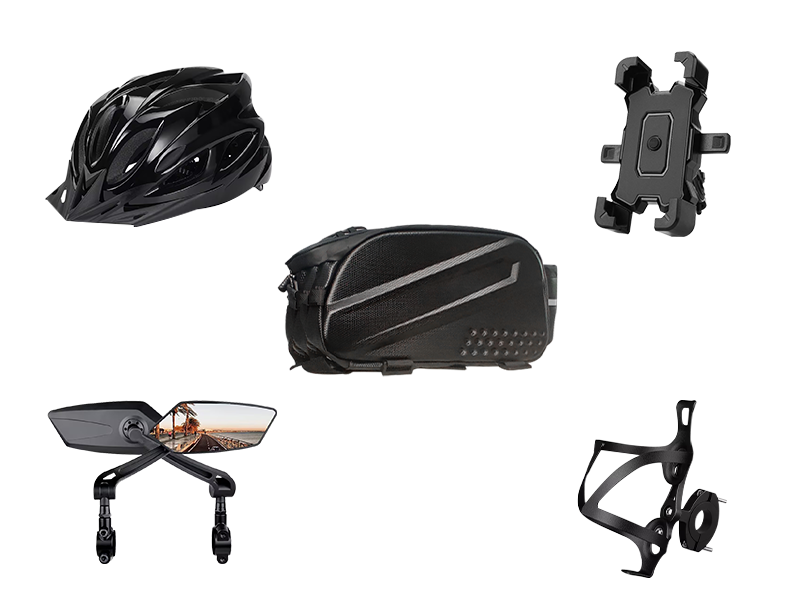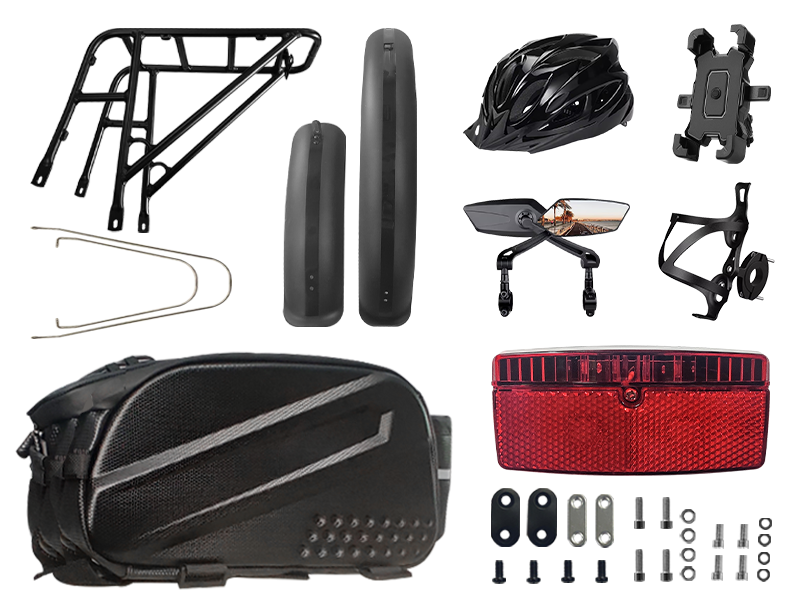How to Maintain an Ebike: A Comprehensive Guide to Keep Your Ride Smooth
FEB 26, 2025
Electric bikes (ebikes) have become a popular mode of transportation and recreation, offering a convenient and eco-friendly way to get around. With their growing popularity, knowing how to maintain an ebike properly has become essential to ensure it lasts long and runs efficiently. Whether you're a seasoned ebike rider or a newbie, taking good care of your bike will not only extend its life but also improve your riding experience.
In this blog post, we’ll go over some simple yet essential steps on how to maintain an ebike, covering everything from battery care to drivetrain maintenance.
1. Battery Care: The Heart of Your Ebike
Your ebike’s battery is the heart of the system, providing the power that drives the motor. Keeping it in good condition is crucial to ensure you get maximum range and long-term performance.
Tips for Battery Maintenance:
- Charge Regularly: Avoid letting your battery completely drain to 0%. Ideally, recharge it when it’s between 20-30% and unplug once it hits 100%. Overcharging or letting it sit in a discharged state for too long can shorten the battery's lifespan.
- Store Properly: If you're not planning on using your ebike for an extended period (over a few weeks), store the battery in a cool, dry place and keep it around 50-60% charge.
- Avoid Extreme Temperatures: Heat and cold can damage your battery. Try to avoid leaving your bike in direct sunlight for long periods or storing it in freezing conditions.
2. Motor Care: Keeping It Running Smoothly
The motor is what makes your ebike so fun to ride, but like any machine, it requires proper maintenance to avoid wear and tear.
Tips for Motor Maintenance:
- Keep it Clean: Dust and dirt can affect motor performance. Regularly clean the motor casing with a soft cloth, and avoid using high-pressure water or harsh cleaning chemicals.
- Check for Noise or Resistance: If you start hearing strange noises or feel resistance while pedaling, it could be a sign that something’s wrong with the motor or the components connected to it. It's best to have it checked by a professional if you notice anything unusual.
3. Tire Care: A Smooth Ride Starts Here
Your ebike’s tires play an important role in comfort, safety, and efficiency. Ensuring they are well-maintained helps you ride with less effort and less risk.
Tips for Tire Maintenance:
- Check Tire Pressure Regularly: Proper tire pressure ensures that your bike performs at its best. Low pressure causes drag, making the motor work harder and reducing battery efficiency. Check your tire pressure every couple of weeks, especially before long rides.
- Inspect for Damage: Regularly inspect your tires for cuts, punctures, or signs of wear. Small punctures can be patched, but if you notice significant damage, replacing the tire is essential.
- Tire Rotation: If you ride your ebike frequently, it’s good practice to rotate the tires periodically, especially if one tire is more worn than the other.
4. Brakes: Safety First
Brakes are one of the most important safety features on any bike, and they need to be in top condition for safe riding.
Tips for Brake Maintenance:
- Inspect Brake Pads: Check your brake pads regularly for wear and tear. If they’re worn down, replace them to maintain stopping power.
- Check Brake Cables and Levers: If you notice the brakes feel unresponsive, it could be a sign that the cables are loose or the brake fluid needs topping up (for hydraulic brakes).
- Test Brake Function: Regularly test the brakes while riding to ensure they are working correctly and provide a smooth and reliable stop.
5. Drivetrain: Smooth Shifting for Better Efficiency
The drivetrain (chain, cassette, derailleurs) is responsible for transferring power from your legs (or motor) to the wheels. Proper maintenance here will ensure that your bike shifts smoothly and efficiently.
Tips for Drivetrain Maintenance:
- Clean the Chain: Regularly clean your ebike's chain to remove dirt, grease, and debris that can cause friction and wear. You can use a degreaser and a chain cleaning tool for thorough cleaning.
- Lubricate the Chain: After cleaning the chain, apply a high-quality bike lubricant. This reduces friction, improves efficiency, and prevents rust.
- Adjust Derailleurs: If your bike is experiencing issues with shifting gears, it may be time to adjust the derailleurs. Ensure the cables are taut, and check the alignment of the derailleur.
6. Frame and Suspension: Ride Comfort and Control
The frame of your ebike holds everything together, and if the suspension is too soft or too stiff, your ride can become uncomfortable, especially on rough terrain.
Tips for Frame and Suspension Maintenance:
- Inspect the Frame: Regularly check your frame for any cracks or signs of damage. Even minor issues can compromise the structural integrity of the bike.
- Check Suspension Settings: If your ebike is equipped with suspension (front or rear), check its settings for the ideal balance between comfort and control. Over time, suspension may need adjustment or servicing.
- Lubricate the Moving Parts: Apply grease to pivot points on your suspension and other moving parts, such as the handlebars, stem, and seat post, to keep them moving smoothly.
7. General Tips and Best Practices
- Regularly Inspect Your Ebike: It’s a good idea to do a quick inspection before every ride. Check brakes, tires, the motor, and battery to make sure everything is in good working condition.
- Follow Manufacturer’s Maintenance Schedule: Each ebike may have specific maintenance requirements depending on its model. Follow the manufacturer’s instructions for recommended service intervals.
- Professional Checkups: Even with regular at-home maintenance, it’s good to have your ebike professionally serviced every 6 months or so, especially if you ride frequently or do long trips.
Conclusion: Keep Your Ebike in Top Shape!
Proper maintenance will not only prolong the life of your ebike but also ensure that it operates efficiently and safely. Whether you’re using it for commuting, exercising, or just enjoying the ride, regular upkeep of your ebike will ensure that every ride is smooth and enjoyable.
By taking care of the battery, motor, tires, brakes, drivetrain, and frame, you'll keep your ebike running in top condition for years to come. So, get into the habit of doing these simple maintenance tasks, and your ebike will reward you with a great riding experience every time!
Happy riding!












